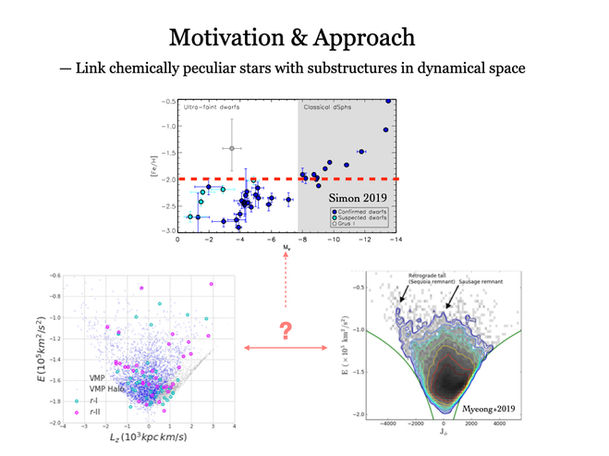top of page

Dr. Yuan, Zhen
Galactic Archaeology
Using old stars to understand the early Universe
Anchor 1:Research

StarGO: searches for ancient fossils - Streams
I search for streams from low-mass dwarf galaxies (stellar mass <~ 1e6 Msun) that accreted to the Milky Way. I use their star members as fossils to understand galaxy formation at very high redshift (z>~6)

StarGO: searches for ancient fossils - Substructures
I search for very metal-poor substructures from dwarf galaxies, which do not have coherent signatures in the configuration and velocity space as stellar streams. These are probably even more ancient fossils from the early Universe. I link them with the known r-process-enhanced stars and try to identify their common origins.

HR-GO: High-Resolution spectroscopic program on the Galactic Origins of elements

The Local Group — studies of resolved stars
Dwarf galaxies are dark matter probes and test stones for cosmology

Experiments in Galactic Dynamics: What can decelerating bar do to old stars?
Tracing old and low-metallicity stars that have disk-like orbits now under a potential of decelerating bar

Machine Learning Toolbox
In order to find and dig out fossils from billions of stars in the Milky Way, I developed tools along the journey.
Stay Tuned
Age determination for halo eclipsing binaries
Anchor 2:Research
Anchor 3:Research
bottom of page